How to fill big shoes and leave a small footprint
At EARTH University, students are living up to their promise of environmental leadership and teaching others how to be better stewards of the planet. Eight EARTH students including Alfonso Charpantier (’16, Costa Rica) who took the cover photo for this story, capture through photography how small everyday actions are reducing their environmental impact and inspiring change.
Carlos Canul
(‘14, Mexico)
Third-year student Carlos is doing his internship in his native Mexico, learning about tomato production in the Michocán region. For him, a way to reduce his carbon footprint is to use animal traction, and explains that another advantage of this technology is its accessible cost.
“Mechanization through animals is a form of mitigating pollution produced by gases. This technique of aerating used by our ancestors is called animal traction. The buffalo is one of the most important animals used because of their large muscle mass and they are more efficient than oxen.” –Carlos Canul
Elizabeth dreams of returning to Kenya to contribute to solving the many problems that affect her country.
“In the future, I would love to work with NGO’s in Kenya. I want to return and promote sustainability, for example with organizations with sustainable agricultural practices that keep the environment in mind, not just production. There is a huge problem with environmental degradation in my country; especially the desertification of many areas and this has a negative impact on agricultural production. They produce less and less food and more people die of hunger.” – Elizabeth Muthoni
Elizabeth Muthoni
(The MasterCard Foundation Scholar, ‘16, Kenya)
Since she lived in Kenya, Elizabeth has understood the importance of reforestation as a form of slowing down global warming.
“Bamboo and trees help to trap carbon dioxide in the atmosphere. In my country I planted a lot of trees, and there have been educational campaigns about the importance of reforesting and protecting the trees to halt climate change and avoid rising temperatures. It is also important to take other actions, for example I prefer to walk and use public transport as a way to diminish my personal carbon footprint.”
–Elizabeth Muthoni
For Antonio, reducing his carbon footprint isn’t limited to planting trees. He thinks that students should be responsible for their resource consumption as well.
“In my day to day life I try to save water by not using it when I don’t need to and I also try to save energy. Even though you can’t see it and sometimes you aren’t aware of it, sometimes here there is a lot of sun to dry clothes, but convenience and conformity have driven us to use the dryer. It’s better to try and save this energy and use solar light.” –Antonio Bresciani
Antonio Bresciani
(‘16, Guatemala)
Antonio Bressani is the second in his family to attend EARTH. Since coming to the graduation ceremony of his brother Ricardo Bressani (’08, Guatemala) he was captivated by the beauty of the campus’s landscape and vegetation. Even though his family mostly works with livestock, during his time at EARTH he has become more interested in crops. This is what inspired him to photograph his friend Lailat José (The MasterCard Foundation Scholar ‘16, Mozambique).
“We should plant trees that capture carbon dioxide. The photo reflects that happiness that she and many other students feel about the possibility of making a change.”
–Antonio Bressani
The MasterCard Foundation Scholar Betania Taquiva (‘16, Venezuela) who appears in the photo, shares Julio’s love of plants as well as the need to diminish her carbon footprint.
”I feel that it is really important to take measures against the effects produced by carbon dioxide now that the temperature changes complicate the conditions for agriculture and put many species in danger of extinction.”
– Betania Taquiva
Lucía Fernández
(‘16, Bolivia)
In the botanical garden, a group of first-year students and staff from the University took advantage of Hijos de la Tierra Day (an institutional volunteer day) to create a garden out of layers of bamboo. The project had started out as a class assignment but was finished with the collaboration of many members of the EARTH community.
“I really liked that the idea became a reality thanks to a shared effort and in the end, every plant that was placed there symbolically represents the commitment of the University community to the environment.”
– Lucía Fernández
Luis Miguel Navarro
(‘14, Costa Rica)
Luis Miguel left this week to do his professional internship in Michigan. His objectives will be to work on a vineyard and learn about agricultural techniques with artificial light. He considers carbon neutrality to be a responsibility.
“I wanted to represent that planting and protecting trees is in our hands; that’s why I titled the photo ‘Life in our hands.’ At the end of the day, the permanence of life on this planet is the responsibility of every one of us.”
–Luis Miguel Navarro
Do you think that small actions can make big changes? We do too. Make your donation today and contribute to preparing leaders of change.

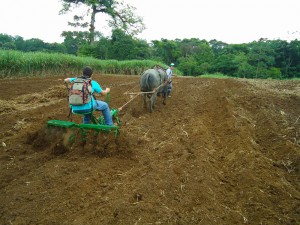
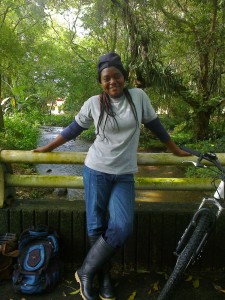
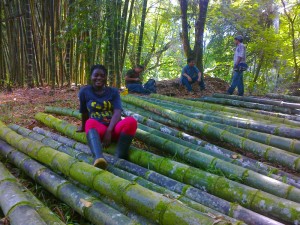
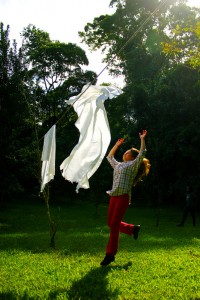
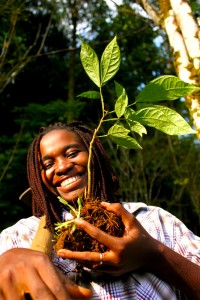
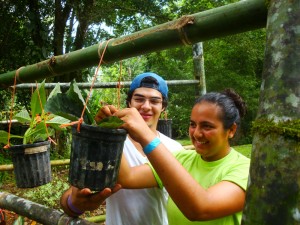
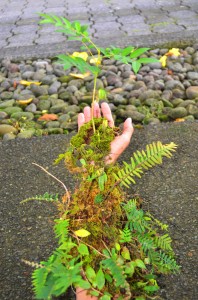




esta muy lindo. saludos.